You can easily convert an eBay air polisher into a nice microetcher by simply switching from the standard sodium bicarbonate powder to aluminium oxide powder. As a dental hygienist, I use this setup to clean and etch (I acid etch too)enamel surfaces prior to placing sealants.
I’ve been using 50 micron Danville aluminum oxide powder in one of my eBay air polishers for a few months now and I love it. Other products I own and have used to perform this same function include a Danville MicroEtcher II, an EtchMaster, and an eBay air polisher with sodium bicarbonate. My go to choice is now the eBay air polisher with aluminum oxide powder for the following reasons:
PROs
1. Easily portable because it simply inserts into your standand 4-hole hand piece connector, so there is no need to install anything (e.g quick disconnect to house air).
2. Water from the air polisher essentially eliminates the dust problem that is common with other etching products. It is still a bit messy, but significantly better than without the water.
3. Cleans and etchs the tooth surface very well.
4. Very affordable. eBay air polishers can be purchased for about $30. It uses the aluminum oxide powder very efficiently. One bottle will last a while.
CONs
1. Aluminum oxide powder may prematurely wear out the air polisher, but since the eBay air polishers are so cheap, who cares.
2. Easier to see without the water.
LINKS
Danville MicroEtcher II: http://www.amerdental.com/treatment-aids-and-patient-comfort/small-equipment/etching/micro-etcher-handpiece-w.html
Danville 50 micron aluminum oxide powder: http://practicon.com/50181-Aluminum-Oxide/p/70-29820/
eBay air polisher product review: http://dentalsuction.wordpress.com/2011/07/06/ebay-air-polisher-product-review/
VIDEO
PHOTOS
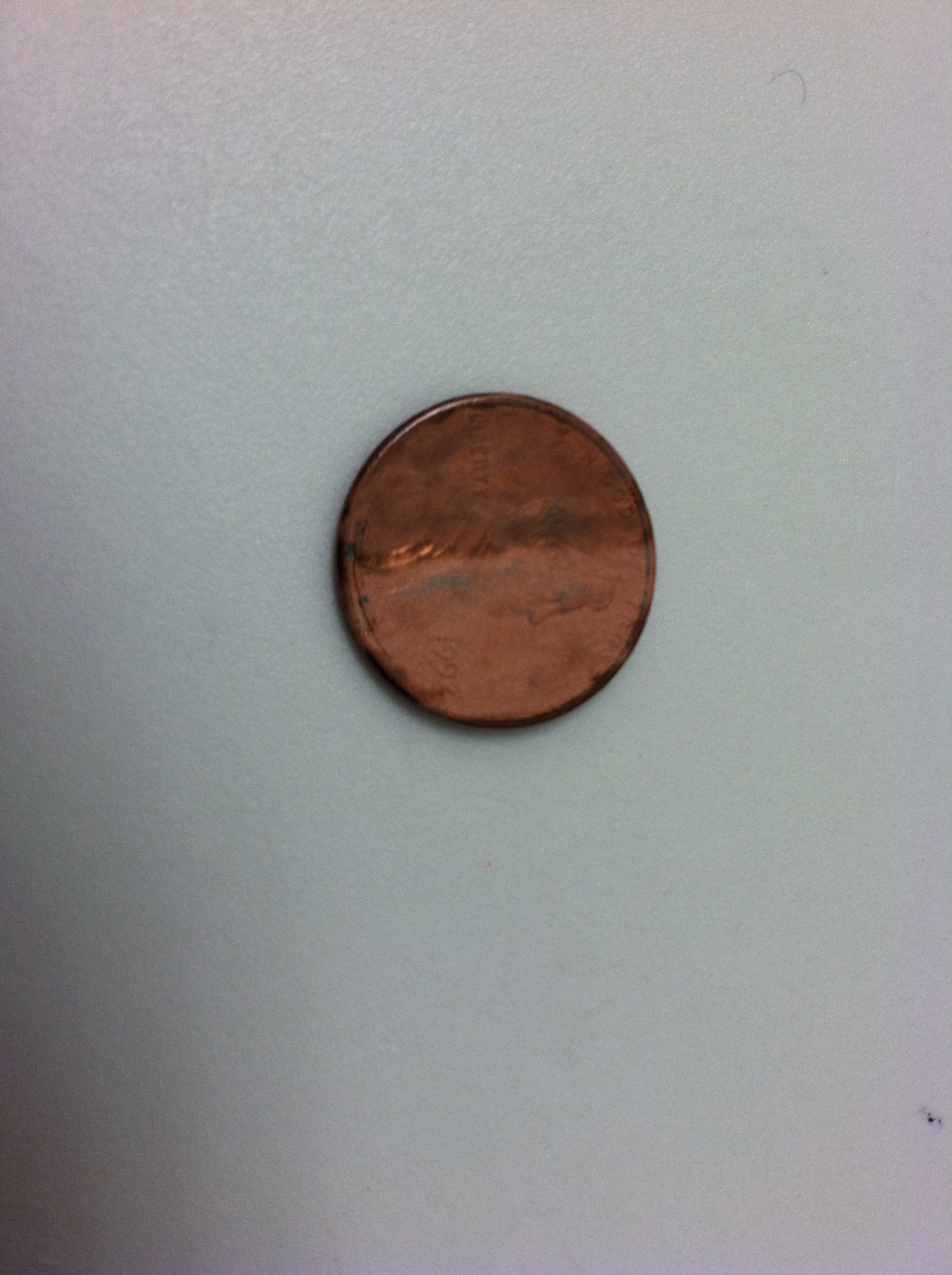
Bottom half etched with air polisher. Top half with Danville microetcher. Performance is about equal. The Danville half looks darker because I had to wipe the powder off with wet gauze.
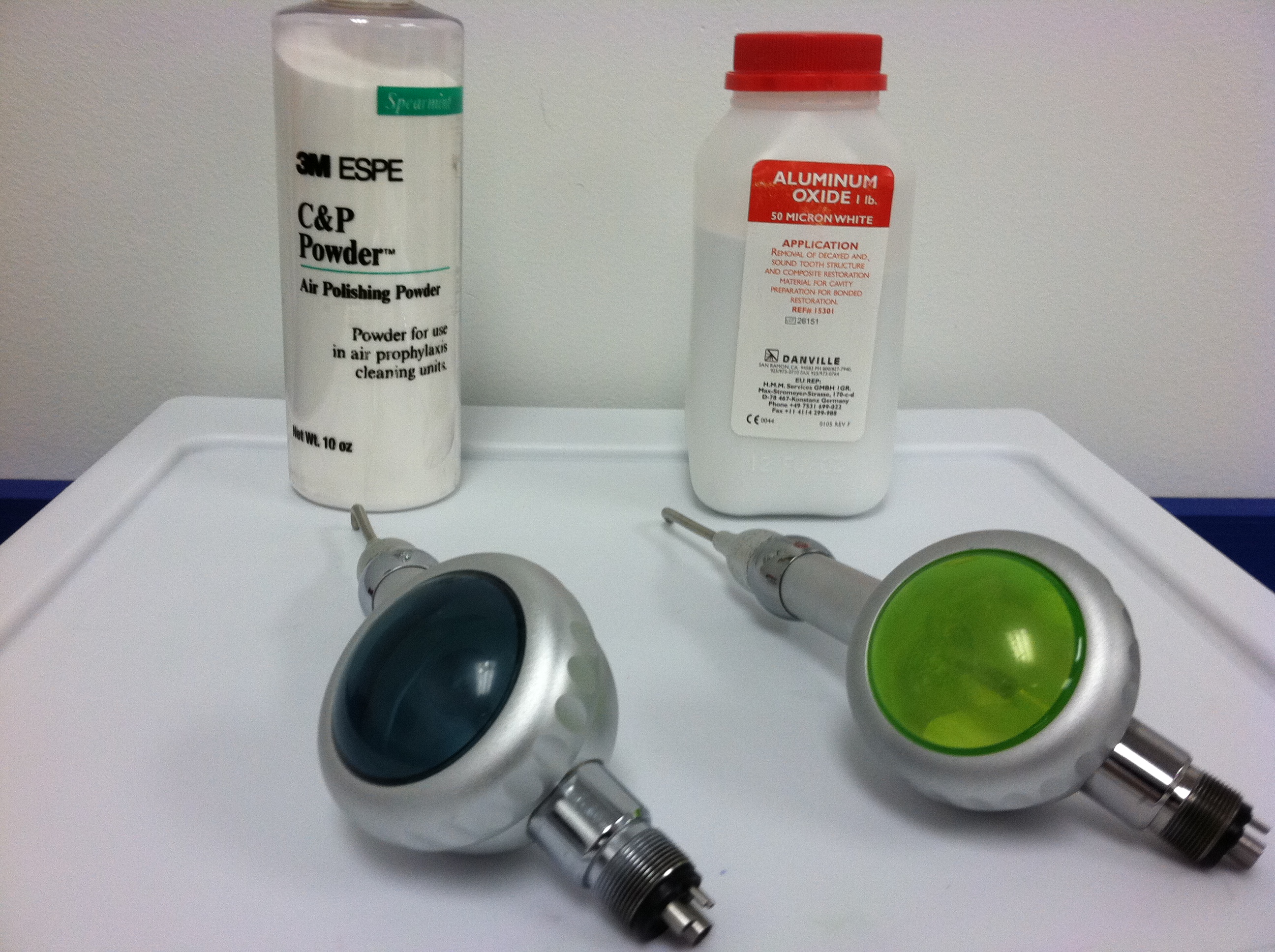
These air polishers come with multiple colored caps for the powder chambers. (left) sodium bicarbonate. (right) aluminum oxide.
END
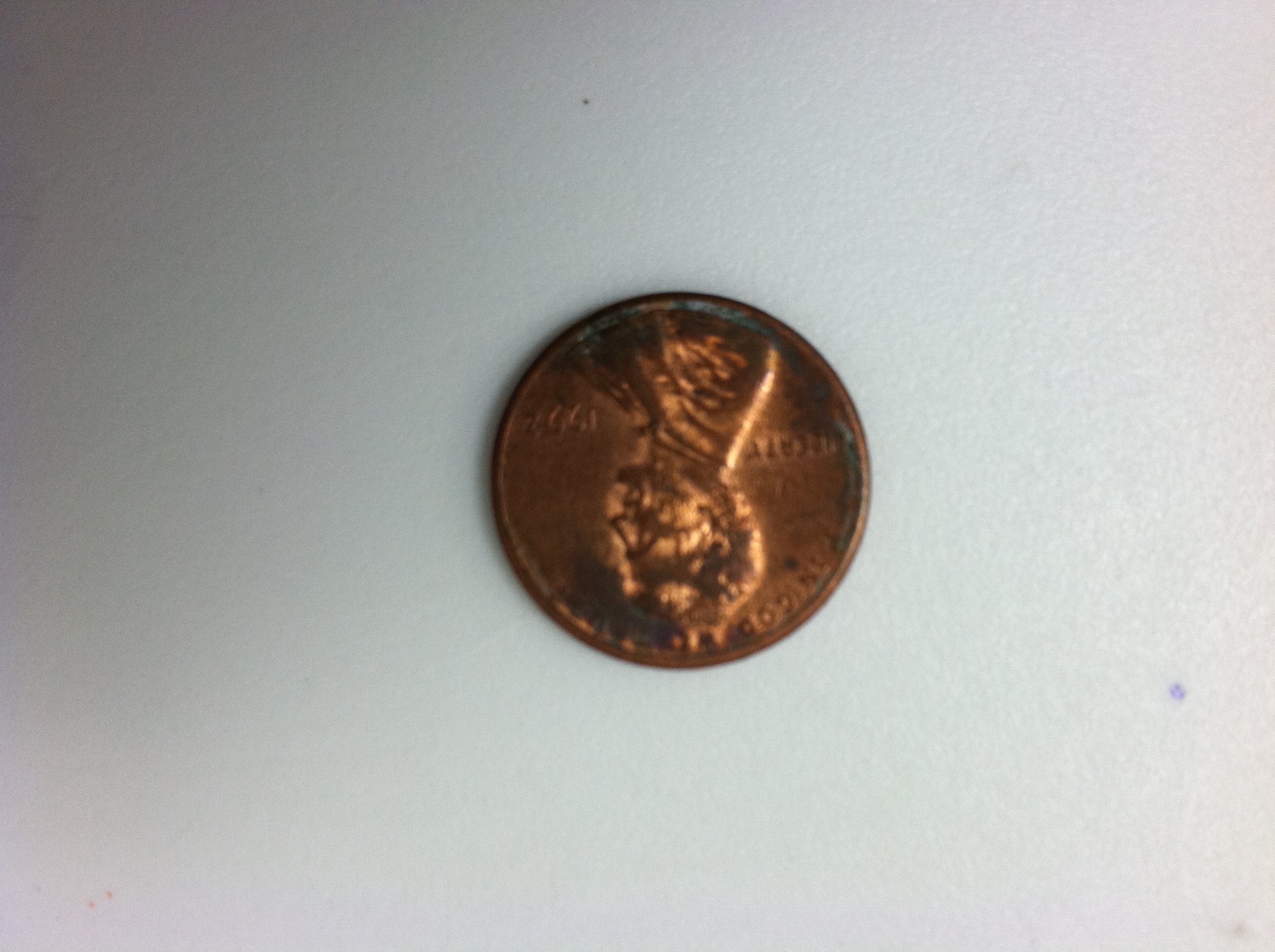
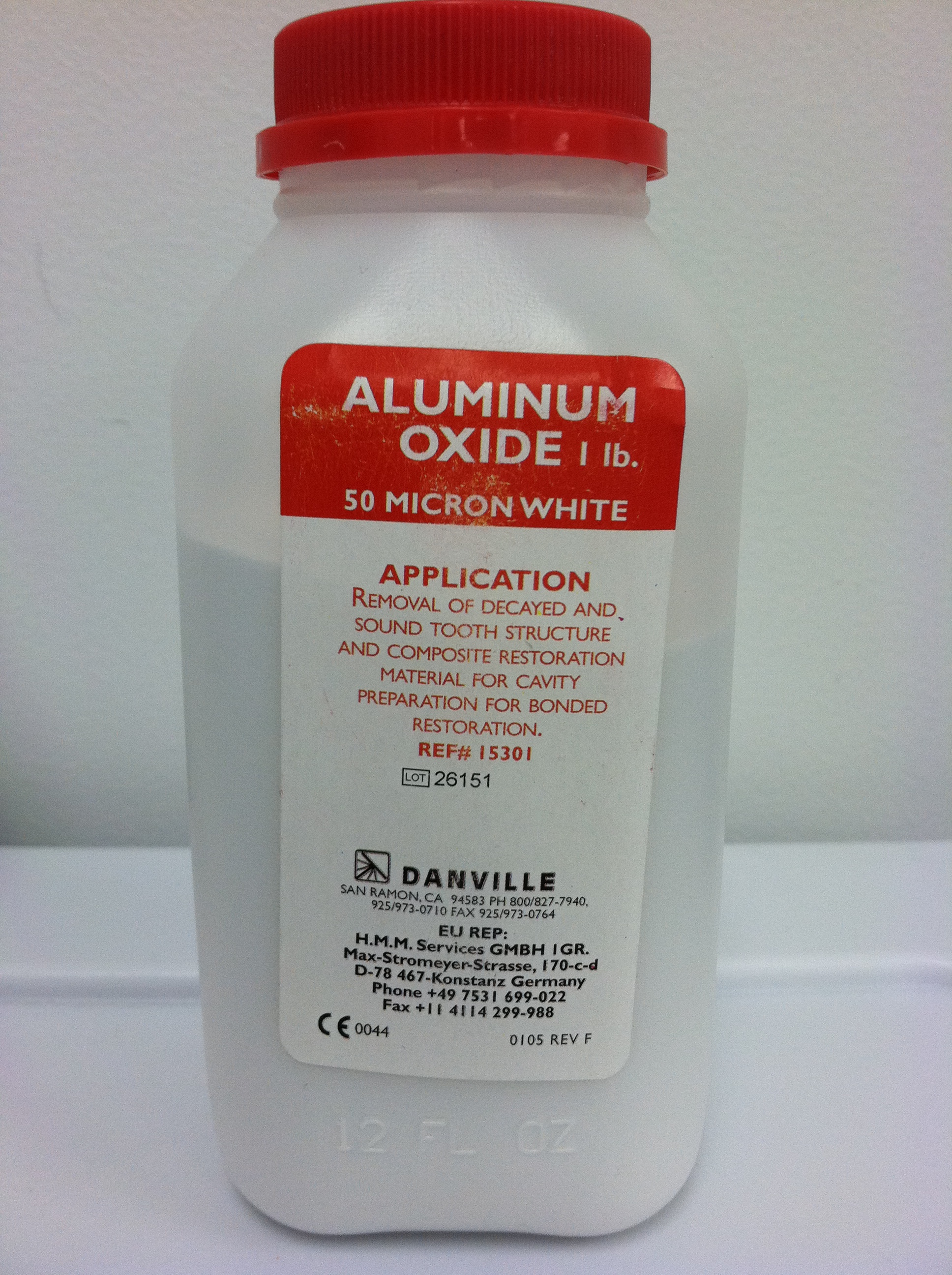
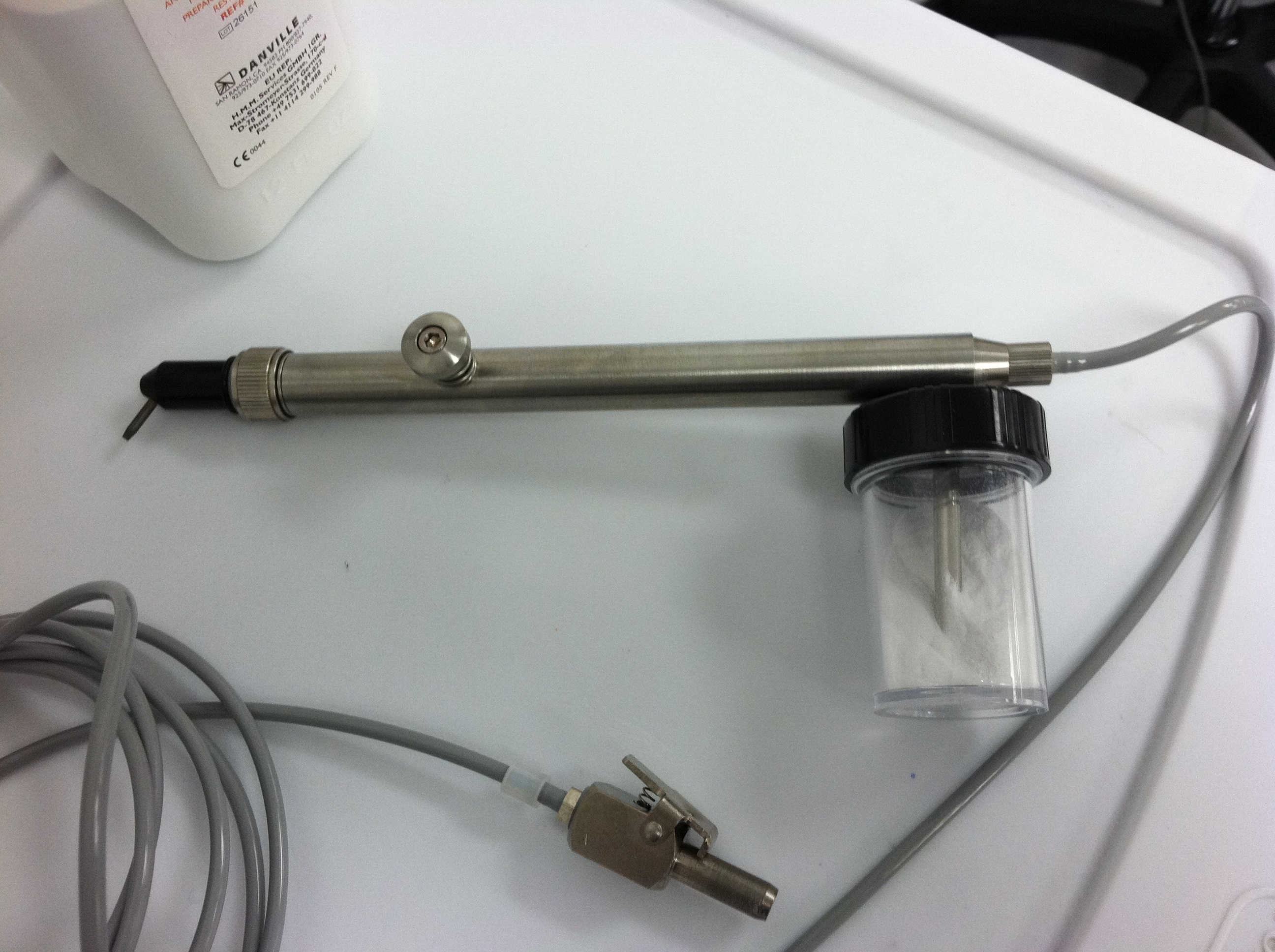
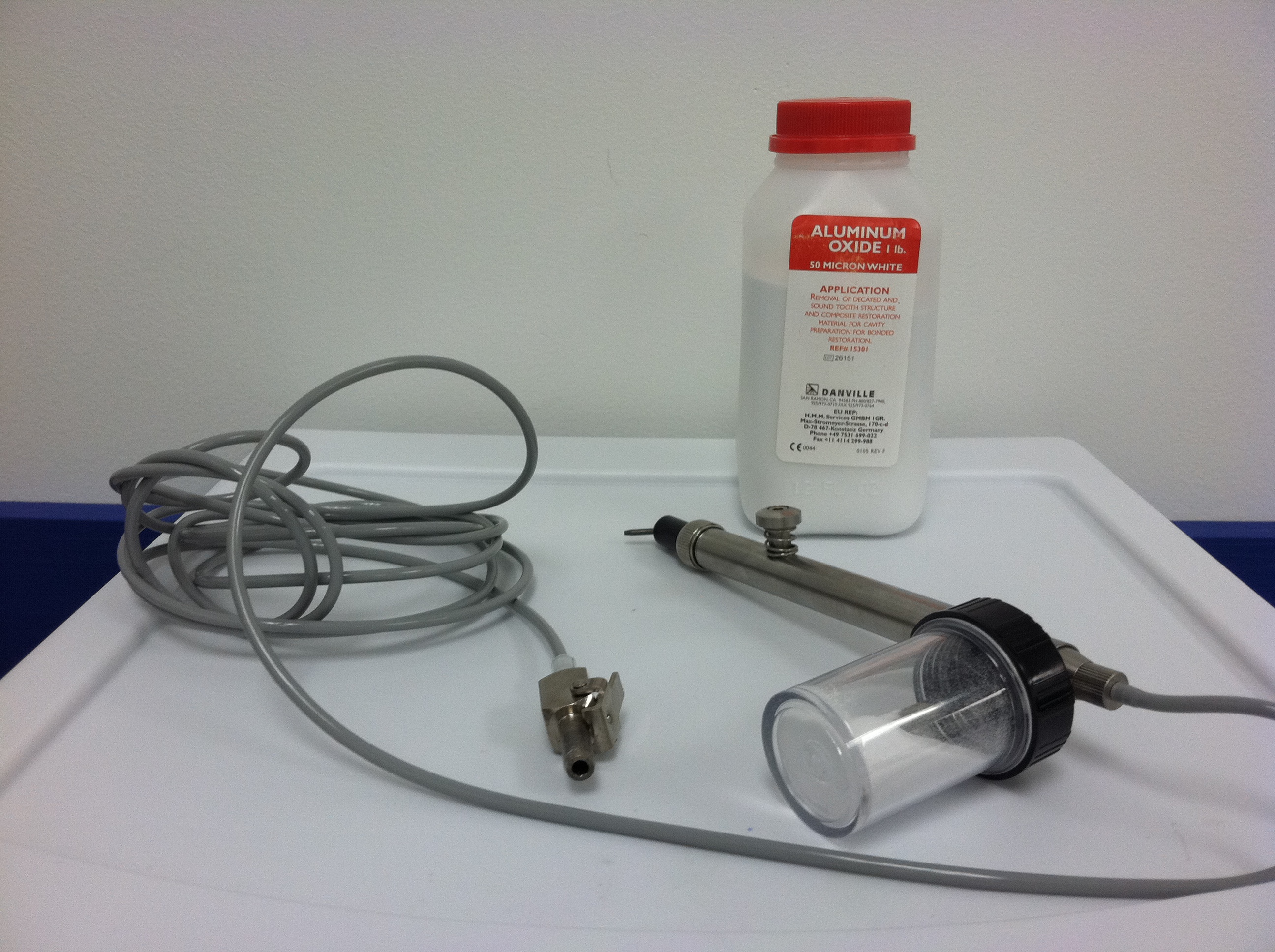
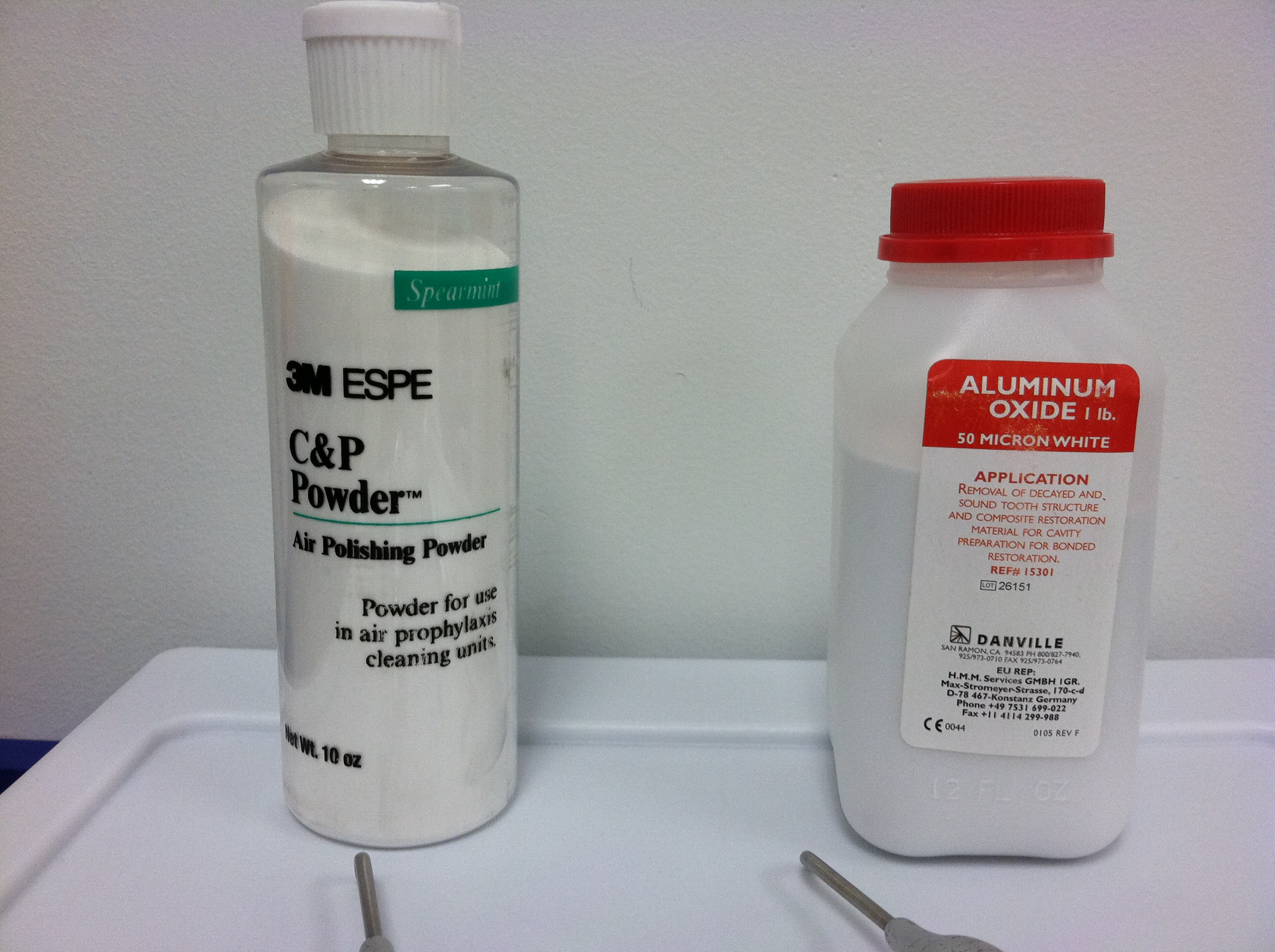
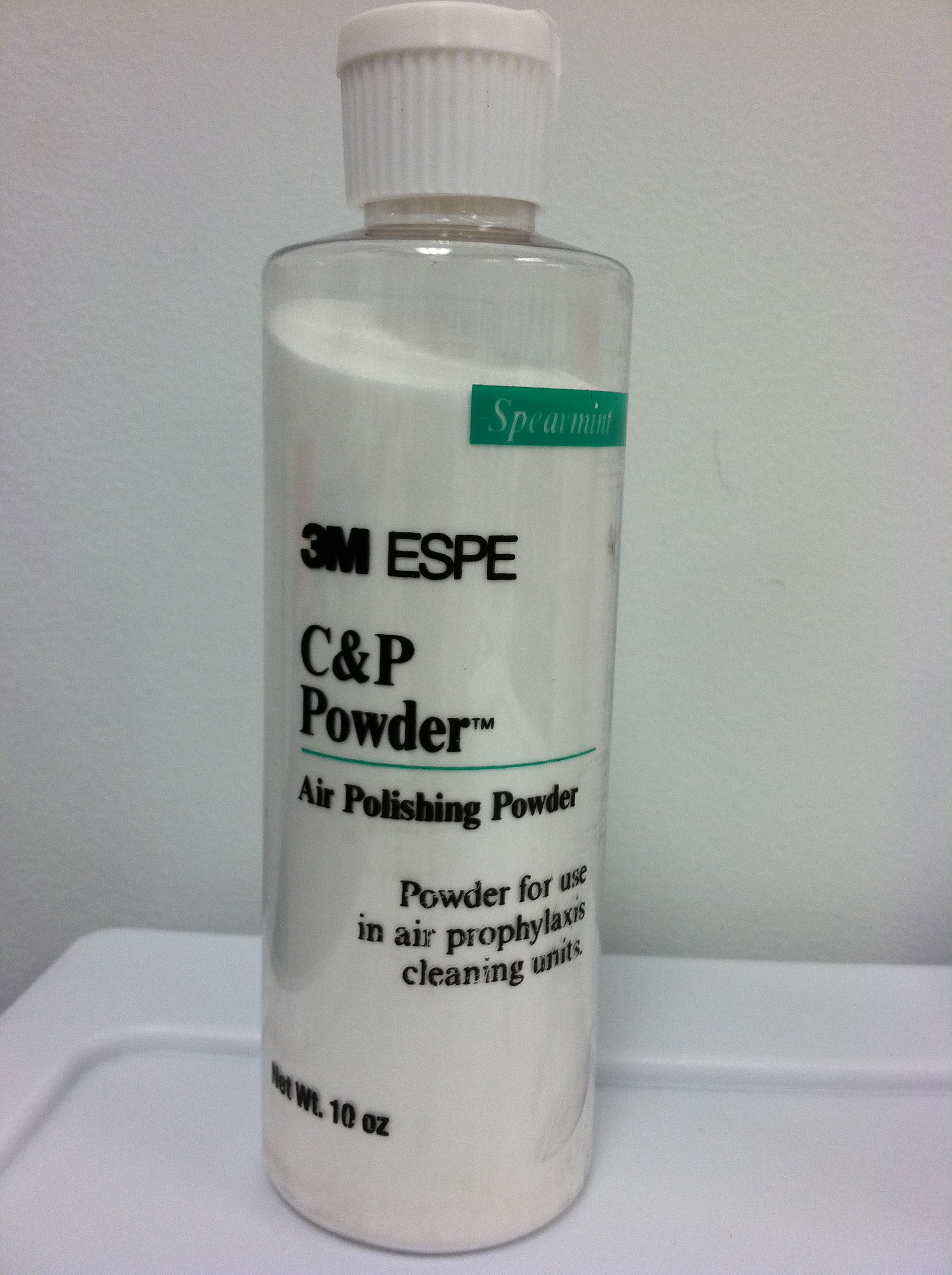
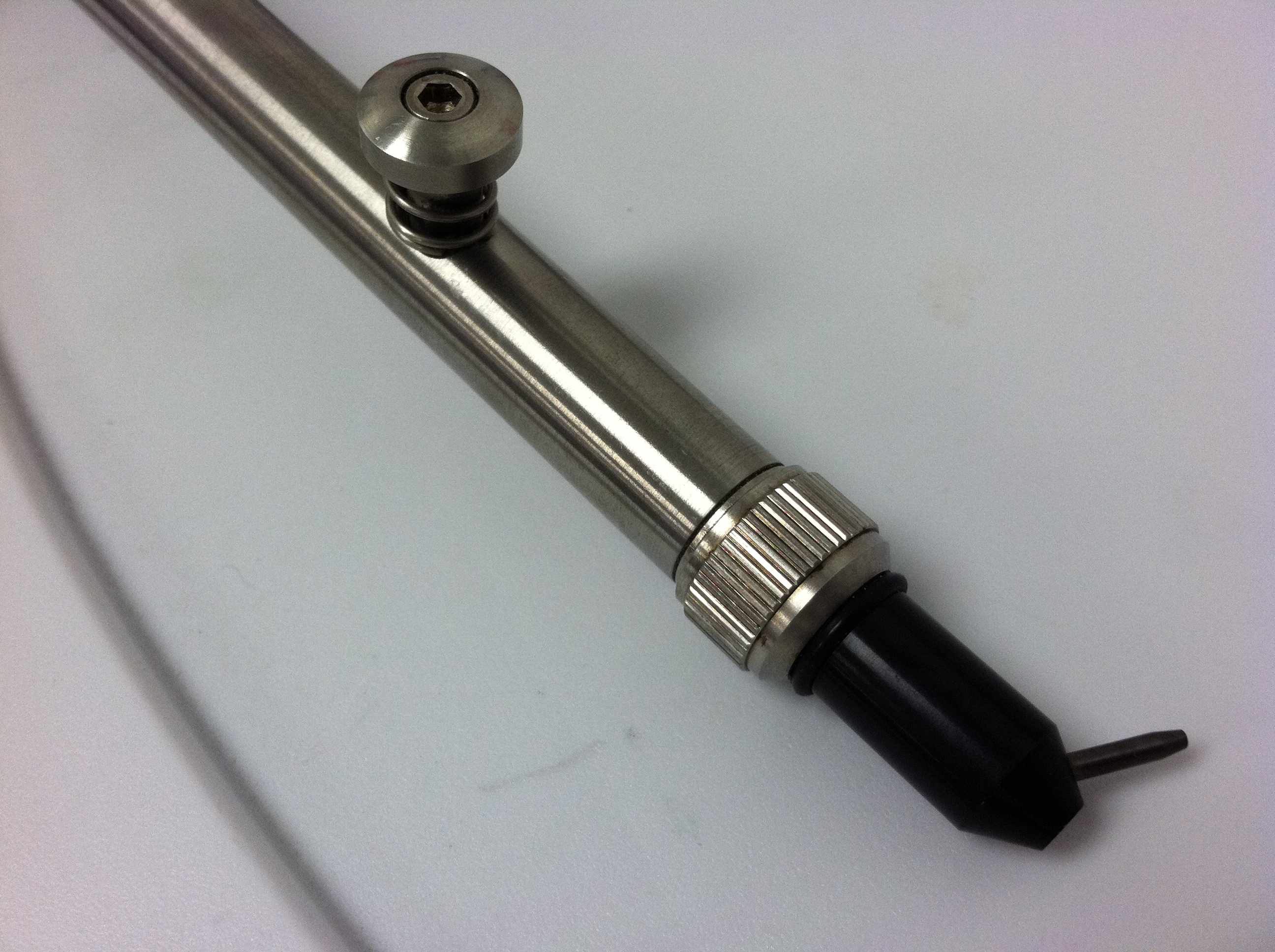
Thanks for the info! That’s good stuff!
Seems to me that using aluminum oxide intraorally is for a dentist and not a hygienist?
Hi Joe. Aluminum oxide can be used for both air abrasion (removing tooth structure) and etching (not removing tooth structure). I run the air polisher at a relatively low air pressure (30 to 40 psi). In this mode the air polisher cleans and etches very well. Air abrasion requires at least 80 psi and smaller orifices on the tips. Sodium bicarbonate cleans the tooth well too, but the aluminum oxide is a little better. Plus, the sodium bicarbonate needs to be neutralized, which means acid etching twice. The aluminum oxide starts the etching process, which makes the acid etch process relatively short. It’s a win win.
Thank you for this. You mentioned air abrasion requiring a smaller orifice on the tip. Is there anyway to do that with the ebay air polisher?
Hi Victor,
There is no tip with a smaller orifice that is available (to my knowledge). Plus, you need at least 80 psi for air abrasion and I don’t think the air polisher is designed for that. The air polisher currently runs at about 30-40 psi, so I don’t think it’s possible.
Thanks, I’m trying to remove tooth decay prior to restaurations without using a drill. You mentioned the Danville Microetcher, if not with the ebay air polisher, then could the Danville Microetcher be a good try?
The PrepAir would be the better choice. Info here: http://danvillematerials.com/Pages/products?prodId=12&n=prepair
You’re the best! I think I’m done asking questions, whats the difference between 27, 50 and 90 micron aluminum oxide?
That’s the particle size. 27 for air abrasion.
I appreciate you. Thank you for all that you’re doing. I can’t figure this out, I’ve called Danville but haven’t been able to get the answer I’m looking for. You said that air abrasion requires at least 80 psi. Danville has told me that the Prep air can connect to any sirona or Kavo handpiece, but these handpieces don’t exceed 45 psi so how can the prepair connect to house air if the output psi is so low?
Victor, I’m not sure. Every air abrasion system I’ve ever read about has always mentioned needing at least 80 psi. Danville would know better than me. Maybe you can try it and return it if it doesn’t work for you.
Thanks again, you’re really helping me out! Is it possible to use a standard shop compressor with a dental air abrasion or microetcher device?
It may work, but it will probably be too loud if it’s located in the same room. You are probably better off with the air compressor being sold at this link (go to bottom of page): http://lionsdentalsupply.com/Dental_Air_Abrasion_System.html
hi,
can you point me towards the evidence determining the particle size for use in composite bonding?
Not sure
Can u use it reverse. Use micro etcher with sodium bicarbonate to clean the stains after prophy
Possibly, but there would be no water in most cases.